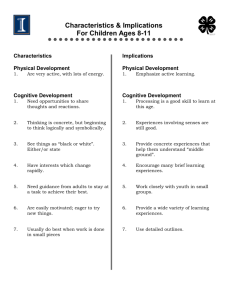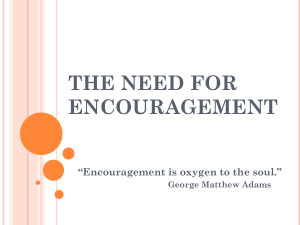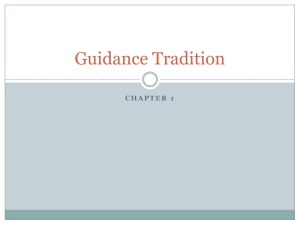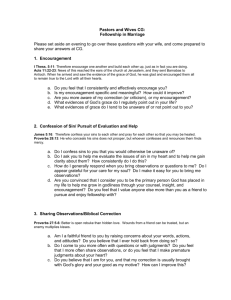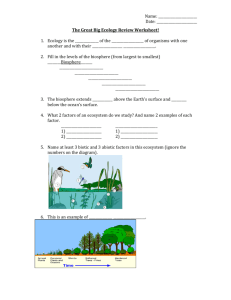State Action/Equal Protection Issue
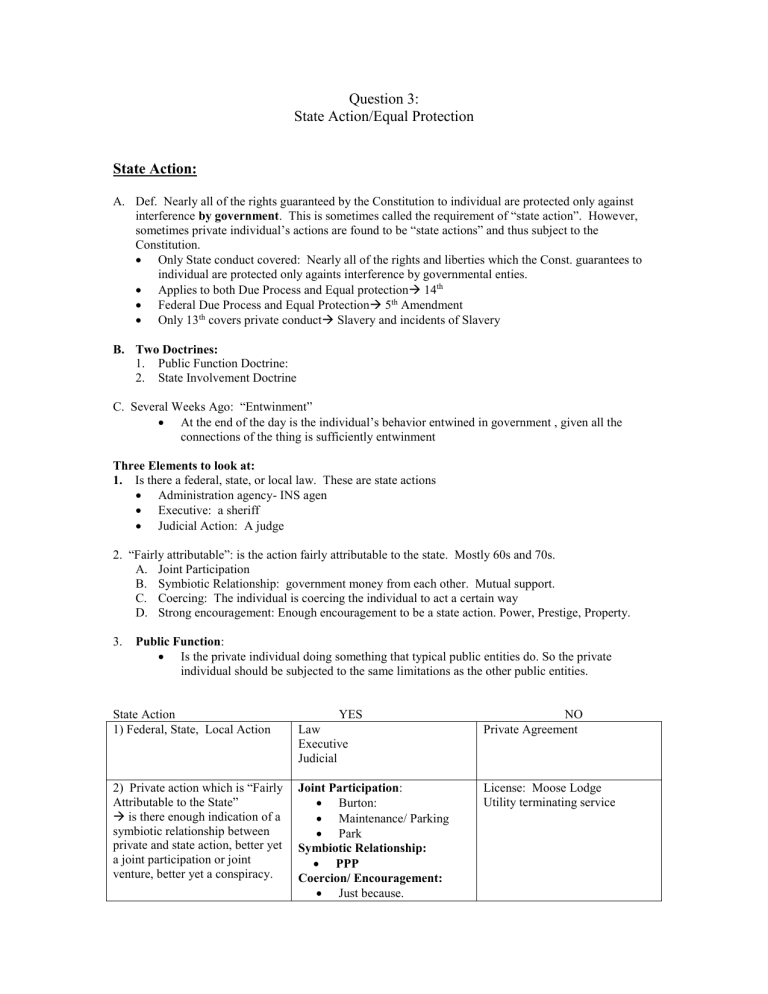
Question 3:
State Action/Equal Protection
State Action:
A.
Def. Nearly all of the rights guaranteed by the Constitution to individual are protected only against interference by government . This is sometimes called the requirement of “state action”. However, sometimes private individual’s actions are found to be “state actions” and thus subject to the
Constitution.
Only State conduct covered: Nearly all of the rights and liberties which the Const. guarantees to individual are protected only againts interference by governmental enties.
Applies to both Due Process and Equal protection
14 th
Federal Due Process and Equal Protection
5 th Amendment
Only 13 th covers private conduct
Slavery and incidents of Slavery
B.
Two Doctrines:
1.
Public Function Doctrine:
2.
State Involvement Doctrine
C. Several Weeks Ago: “Entwinment”
At the end of the day is the individual’s behavior entwined in government , given all the connections of the thing is sufficiently entwinment
Three Elements to look at:
1. Is there a federal, state, or local law. These are state actions
Administration agency- INS agen
Executive: a sheriff
Judicial Action: A judge
2. “Fairly attributable”: is the action fairly attributable to the state. Mostly 60s and 70s.
A.
Joint Participation
B.
Symbiotic Relationship: government money from each other. Mutual support.
C.
Coercing: The individual is coercing the individual to act a certain way
D.
Strong encouragement: Enough encouragement to be a state action. Power, Prestige, Property.
3.
Public Function :
Is the private individual doing something that typical public entities do. So the private individual should be subjected to the same limitations as the other public entities.
State Action
1) Federal, State, Local Action
YES
Law
Executive
Judicial
NO
Private Agreement
2) Private action which is “Fairly
Attributable to the State”
is there enough indication of a symbiotic relationship between private and state action, better yet a joint participation or joint venture, better yet a conspiracy.
Joint Participation :
Burton:
Maintenance/ Parking
Park
Symbiotic Relationship:
PPP
Coercion/ Encouragement:
Just because.
License: Moose Lodge
Utility terminating service
3) Public Function
(what extent is the private action doing a public function)
Marsh Company Town
Sit in cases
Huddgens-Shopping Center
Public Function:
A.
A private individual does something that a public entity does.
B.
The court finds it sufficiently company towns similar to regular towns. Marsh v. Alabama
Marsh Factors: Company Town
The streets are open to the public, no trepassing sign.
The facilities are built for the public.
The town has its own police, run a post office.
This company town does all the things we associate with cities.
C. If you are operating like a town you are held to the same standards as other towns. a.
Means protecting free speech, equal protection.
D. Primaries: a.
Are Public function b.
The core public function is election to public office and it is easy to find it a public function.
The primary cases are somewhere in the middle. The private parties trying to decide who is going to run in a public election. c.
Each stage of that process is a public function. The convention, demonstrators do not have a right to protest inside the convention. d.
Ex. Texas Democratic Party: would exclude non-whites the right to vote in a primary. This was when Texas was a one party Texas. So that who own the primary won the election.
E.
Not Public Function :. a.
A shopping center or mall was not a public function: Difference between Marsh, was the private ownership rights. b.
Marsh was all things together made the company town a public function. But here only have shopping center, and the court says one thing is not enough. Huddgens (1976) c.
Logan Valley Shopping Center: 1963-69, looking to protection rights, going to get decisions that will torture the action to find state action. d.
Huddgens, does not find every shop a state action. e.
Huddgens is saying that just a shopping center is not enough and not a public function.
Huddges and Marsh is good law, and Logan Valley is overruled. f.
Utility not a state action.
Private agreements a.
Private Agreement to engage in racial discrimination, there is nothing you can do in the constitutional, b/c does not violate 14 th , b/c there is no state action. b.
Courts to rule on it, once the courts got involved, it became an state action. Involving a judicial actor, and the judicial enforcement would be enforcing racial discrimination and that would violate the 14 th Amendment. Shelly c.
So in general if you are trying to get a judge to enforce racial discrimination then it violate
14 th Amend. d.
When judicial enforce ordering discrimination is what triggers state action. e.
The fair housing act exist b/c commerce clause of the liberal readings of the 60s court, it would not be justified by the 14 th amendment. They are laws against the private discrimination
Fairly Attributable:
1.
Joint Participation
2.
Symbiotic Relationship
3.
Encouragement
A.
Joint Participation:
Private Park: Newton( 1966) a.
Joint participation, there is enough in the park, hat it has become of the city, and thus the city cannot discriminate. b.
The private park had become part of the city, the city had kept it up, and the public nature of the park should not be overlooked b/c of the private trustee’s. c.
Sweeping, maintaining by the city.
Private Will for Reverter Park: Evens v. Abney (1970) a.
Not the kind of state action like Newton and Shelly, and following the private will. The private intent versus actual. b.
Different than private agreement, not looking for an affirmative enforcement of something. c.
Facts: Abney The park land reverts back to the heirs of the senator. d.
the city says were are not going to run this park anymore, so they are refusing to do anything. e.
Difference b/tw active action, and passive action. f.
But the precedent is that affirmation actions are state action. More passive acquiescence, or failure to do something is not state action g.
Assume that there is a restrictive covenant in a residential housing developed provides, that if the property is ever sold to a black, the land automatically reverts to the remaining white homeowners.
He says this is a close case between Shelly and Abney.
Symbiotic Relationship: mutually beneficial a.
Burton : The parking authority that was funded by the state, was benefited from the lease by restaurant in the parking building b.
At first they leased the restaurant form the government, and the government wants them to do well to make money so that they will pay for the lease. c.
The parking facility: They need the commercial entities to come in from the partrons of the restraunt. d.
Maintenance: The government furnished, heat and maintained. e.
Rule: The state has elected to place its power property and prestige behind the individual activity. The more you can show that Gov. has placed it behind the operation, the more you will find a symbiotic relationship, thus state action. Buron v. Wilmington Parking Authority
State Encouragement a.
The state have a significant tendency to support and facilitate, then that is State encouragement to have state action. b.
Is enough encouragement to have state action? It is not a dollar amount . Rendell-Baker.
c.
The school got 90% of funds from state, but they are firing something, this was an independent decisions and has no encouragement from the state, then there is no state action. d.
Finding state actions is not an all or nothing thing. It depends on a decision that is being sued on, and if that is state action. e.
Public Defender:: a state/private actor. The public defender paid 100% by the government.
Those decisions are not state actions in the defense. But the hiring and firing is a state actor and state action is involved. Polk County f.
Firing: At the end of the day was not state action, but the termination practice really was initially decided upon independently by the utility company. Edison
Licensing: state provides the licensee: a.
Moose Lodge: The court ruled that there was not enough state encouragement. The number of liquor license was fixed.. And the state says that we think one of the places that should get it
Not enough of the connections. b.
Private student organization: Registered students: maybe a symbiotic relationship. That room and board. Would it be enough?
Dispute Resolution/ Self-Help : Flagg Brothers:
a.
Is not State action: Under UCC it is self-help remedy. b.
Dispute resolution is not a public function. c.
Self-help w/ possibility of private waiver (creditor could waive) This totally a matter of dispute resolution, thus the state is not taking sides. d.
Resolving the dispute does not make it a public function, but criminal law is . e.
Luger Case: The creditor does not have the property, they have to go to court to get the property.
That is state action, b/c you have involved the court to attach the property.
If pure Self Help is no state action, but like Lugar if you involve government at all there is state action:
LUGAR TEST: Modern Test
1) Some right ( that has been deprived) a.
You are always suing about some right. b.
Any kind of right, c.
Created by the state, const, the law, statutory.
2) Person
State actor: a.
Is the person a state actor: It is the three part test of how much it looks like:
1) Federal state and local action
2) Fairly attributable
3) Public Function
Pre-emptory Challenges: a.
Pre-emptory challenges are deemed by state statute, that gives you that right. b.
Governmental function; fairly attributable c.
Found state action: The government sets up the jury system, and summons people and the rules. d.
Rule: Jury resolution of disputes is a public function, public way to resolve disputes e.
court house, property, power and prestige argument
State Action YES NO
1) Federal, State, Local Action Attach Property: Lugar : Self Help/Alt. Dis. Res.: Flagg
Right to Reverter: Evans
3) Fairly attributable:
3) Public Function
Burton : Property/Power/Prestige
Brentwood : High school athletic association, there is a symbiotic relationship, most of the school were public.
Marsh/ Terry
Moose Lodge: Private property
Private independent decision
NCAA : Private independent making deciplinary rule. Private actors.
Shopping Mall: Huddgens
Mirror Image Cases:
A.
An action by a public university is state action. the people who work for them is state actors.
B.
NCAA : half private schools and half public schools. Court ruled NCAA is not a state actor . a.
There was no state law requirement that the school follow the NCAA recommendations. If the state adopts the private rule as there state rule could have an argument. b.
Independent Decisions : were making their decisions w/ out state participation or encouragement. c.
When a public defender is making decision independent of the state, d.
The NCAA enjoyed no governmental powers to facilitate its investigation. It had no power to subpoena witness, to impose sanctions, or to assert sovereign authority over any individual.
Formalist:
Formalist and Holmesian would have a bias and find no state action and focus on finding no state action, b/c private
Instrumentalist:
Will do anything to find state actions.
Natural Law:
How much connections are there, are there enough. Edmonson.
EXAM: Modern go in saying the courts engage in a balancing of facts, given how much factors you can use to find a support for state action.
